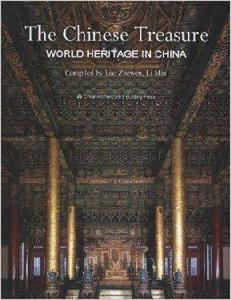內容簡介
《神州瑰寶:世界遺產在中國》是由中國建築工業出版社出版的。
圖書目錄
Preface
Creams of Nature and Gems of China
World Cultural Heritage
The Great Wall
Imperial Palaces of the Ming and Qing Dynasties in Beijing and Shenyang
Mausoleum of the First Qin Emperor
Mogao Caves
Peking Man Site at Zhoukoudian
Historic Ensemble of the Potala Palace,Lhasa
Mountain Resort and its Outlying Temples,Chengde
Temple and Cemetery of Confucius and the Kong Family Mansion in Qufu
Ancient Building Complex in the Wudang Mountains
Lushan National Park
Old Townof Lijiang
Ancient City of Ping yao
Classical Gardens of Suzhou
Summer Palace in Beijing
Temple of Heaven in Beijing
Dazu Rock Carvings
Mount Qingcheng and the Dujiangyan Irrigation System
Longmen Grottoes
Imperial Tombs of the Ming and Qing Dynasties
Ancient Villages in Southern Anhui——Xidi and Hongcun
Yungang Grottoes
Capital Cities and Tombs of the Ancient Koguryo Kingdom
Historic Centre Ot Macao
Yin XU
Kaiping Diaolou and Villages
Fujian Tulou
Mount Wutai
Mixed World Cultural and Natural Heritage
Mount Taishan
Mount Huangshan
Mount Emei and Leshan Giant Buddha
MountWuyi
World Natural Heritage
Wulingyuan Scenic and Historic Interest Area
Jiuzhaigou Valley Scenic and Historic Interest Area
Huanglong Scenic and Historic Interest Area
Three Parallel Rivers of Yunnan Protected Areas
Sichuan Giant Panda Sanctuaries
South China Karst
Mount Sanqingshan National Park
Chronology of Inclusion of China's Sites
on the World Heritage List
序言
World heritage is a masterwork of nature and human civilization, and is the unparalleled natural and huhaanistic and cultural sceneries. For the purpose of protecting world culture and natural heritage, at the 17th session of UNESCO held on 16th of November, 1972, the Convention Concerning the Protection of the World Cultural and Natural Heritage was officially adopted. In 1976, The UN World Heritage Commission (WHC) was founded. And in 1978, it approved the first group of 12 world heritages to be included on the World Heritage List. World heritage includes natural heritage, cultural heritage, cultural landscape, and mixed cultural and natural heritage. Any place when it is named on the list of world heritage by the WHC, will become a world-class scenic spot and will be supported by the World Heritage Fund, and be widely noticed and strictly protected by the world community. At the same time, its reputation will also be greatly promoted and a decent social and economic result will be produced. China is one of the world's four old civilized countries, enjoying a vast territory and beautiful mountains and waters. Stretching across thousands of miles and having a history of five thousand years, China's magnificent and gorgeous natural landscapes and long history have carried in itself the nation's brilliant cultural and natural heritages, a valuable wealth also shared by the whole world. On 12th of December of 1985, China joined the Convention Concerning the Protection of the World Cultural and Natural Heritage and on October 29 of 1999, was elected as a member of the WHC. Over the past 25 years, Chinese government together with its people have spared no efforts to protect and utilize world heritages and have made distinguished contributions to this project. Generally speaking, China's world heritage sites have five essential features:

